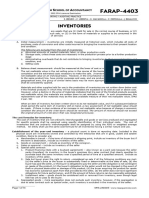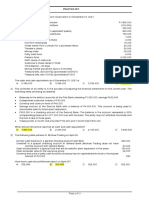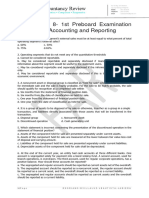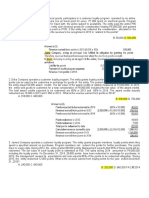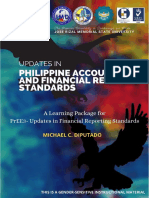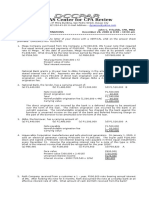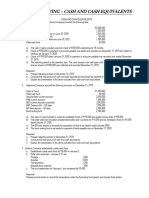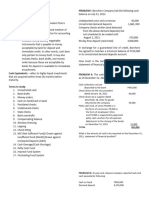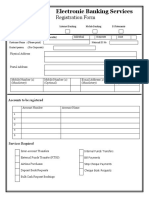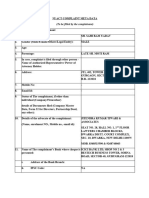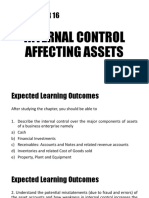0% found this document useful (0 votes)
2K views9 pagesCash Cash Equivalents Reviewer2
The document defines cash and cash equivalents and their composition. It discusses the valuation and presentation of cash in the statement of financial position. Cash includes items like cash on hand, demand deposits, and negotiable instruments that are readily convertible to cash. Cash equivalents are highly liquid, short-term investments that can be converted to cash within 3 months with little risk of changes in value. Both are presented as a single line item called "cash and cash equivalents" under current assets.
Uploaded by
chimckenbananaCopyright
© © All Rights Reserved
We take content rights seriously. If you suspect this is your content, claim it here.
Available Formats
Download as DOCX, PDF, TXT or read online on Scribd
0% found this document useful (0 votes)
2K views9 pagesCash Cash Equivalents Reviewer2
The document defines cash and cash equivalents and their composition. It discusses the valuation and presentation of cash in the statement of financial position. Cash includes items like cash on hand, demand deposits, and negotiable instruments that are readily convertible to cash. Cash equivalents are highly liquid, short-term investments that can be converted to cash within 3 months with little risk of changes in value. Both are presented as a single line item called "cash and cash equivalents" under current assets.
Uploaded by
chimckenbananaCopyright
© © All Rights Reserved
We take content rights seriously. If you suspect this is your content, claim it here.
Available Formats
Download as DOCX, PDF, TXT or read online on Scribd
/ 9

